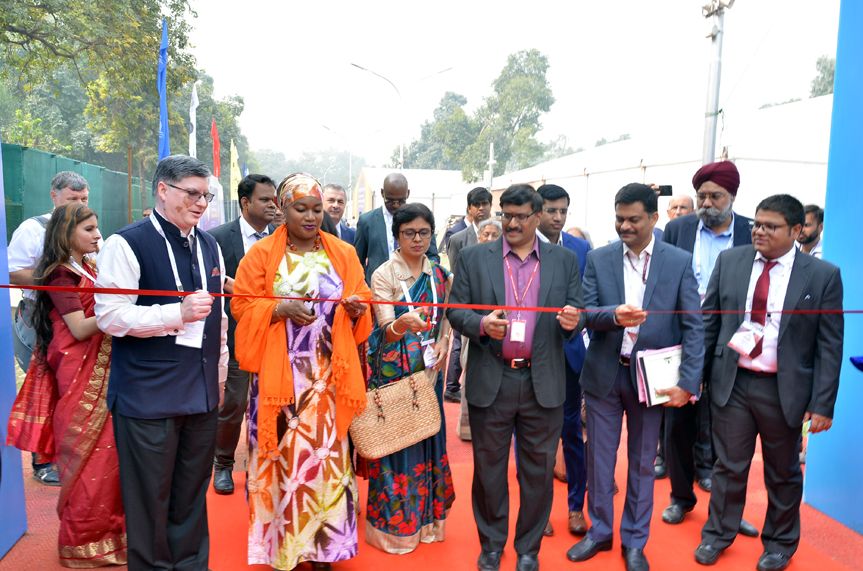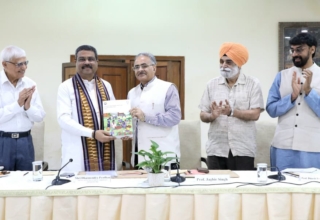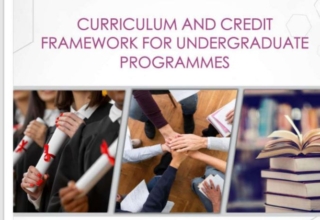
14th edition of FICCI’s Higher Education Summit 2018
 FICCI Higher Education Summit, which is a flagship annual higher education conference of Federation of Indian Industries and commerce (FICCI), one of the largest business chambers in India, was held from Oct 29-31 on the theme of ‘Universities of the Future’ and had focussed discussion amid making India a global destination for higher education
FICCI Higher Education Summit, which is a flagship annual higher education conference of Federation of Indian Industries and commerce (FICCI), one of the largest business chambers in India, was held from Oct 29-31 on the theme of ‘Universities of the Future’ and had focussed discussion amid making India a global destination for higher education
According to Amitabh Kant, CEO, NITI Aayog the government has taken a host of measures during the last two years to create an ecosystem for creating a top class higher education system in the country and it is upto universities to make strenuous efforts to attract the best talent as faculty, adopt cutting edge technologies and courses, highlight India’s strengths in special knowledge areas, support innovation and encourage incubation for start-ups, create an ecosystem for high quality research and push for quality through a credible world class accreditation framework to finding a higher place in world rankings. At present, the number of Indian students going overseas for high education is 10 times more than foreign students coming to India for study.
Speaking here at the valedictory session of the 14th FICCI Higher Education Summit 2018, organised by FICCI in collaboration with the Ministries of Human Resource Development and Commerce & Industry, Kant said that a brand is not about advertising, marketing and promotion; it is about creating a great product that is capable of attracting talented students and faculty to its shores.
The showcasing of a video on Study in India outlined the initiative and process of this program aimed at attracting foreign students to India.
Earlier, speaking on ‘Universities of Future – Gateway to New India’, TV Mohandas Pai, Chairman, Chairman, Manipal Global Education, spelt out the prerequisites for universities of the future if India was to produce students with problem-solving skills sought by employers. He said that the higher education system in India can be classified into three categories- research based universities, teaching universities and skill based or foundation universities. Each category should be backed with sufficient funding and flexible regulation.
Singapore higher education model, where students don’t quite leave
Prof Tan Eng Chye, President National University of Singapore, who gave a keynote in the inaugural plenary of the conference, was clearly one the best speakers who was received very well. He talked about Singapore experience, where human capital is the crucial national resource of sustainability. He showed how with collaboration as a strategy, the NUS has been sending a sizeable number of students to places like silicon valley and other hubs as interns for a year and partnering with local universities for their modules.
Prof Chye also explained his university’s lifelong learning initiative, in which alumni, particularly who feel heat of changing job roles or risk of job losses can come back to university and take short duration courses to change course of their employment or career. He talked about courses in subjects like urban solutions, financial services, cyber security, data analytics in which the university will train its middle age students. “We give employers our commitment of 20 years for our students under continuing education framework,” he said.
Another expert, Alex Usher, President of Higher Education Strategy Associates, Canada, while speaking on financing models, expressed his concern over linking NIRF rankings with funding. He said India is the only country doing so. He said India must mobilize student fee as a major resource of finding while ensuring fairness regime of ensuring access to all. “You can make rich students pay and through that subsidize for those who can’t pay,” he said. He also advocated public guarantee for education loans as it has been a major factor in China’s higher education growth. He said China, Kenya, Malaysia, Brazil, all have a robust fee fairness regime, which is fuelling their higher education growth.
It may be mentioned India is aiming for 60% GER in higher education under New India in next a few years.
Universities need to provide students with career counselling, scope for interface with industry & online courses for skill set upgradation: FICCI-EY Paper
The FICCI-EY Approach Paper notes that universities of the future must be prepared for both unprecedented challenges, as well as unparalleled opportunities for innovation. Apart from enriching their curriculum from industry inputs, universities need to provide students with career counselling, opportunities of industry interfacing and online courses for skill set upgradation.
To enrich students’ experience, universities could use technology to provide experiential and collaborative learning and provide flexibility in program structures and encourage innovative ideas.
Universities need to develop research as a fundamental differentiator, work on innovative models for collaboration and develop a mechanism to safeguard their IP in the digital age.
While universities would need to focus on solving societal challenges, regulators need to develop frameworks that focus on outcomes rather than investment in inputs and recognise stackable credentials.











